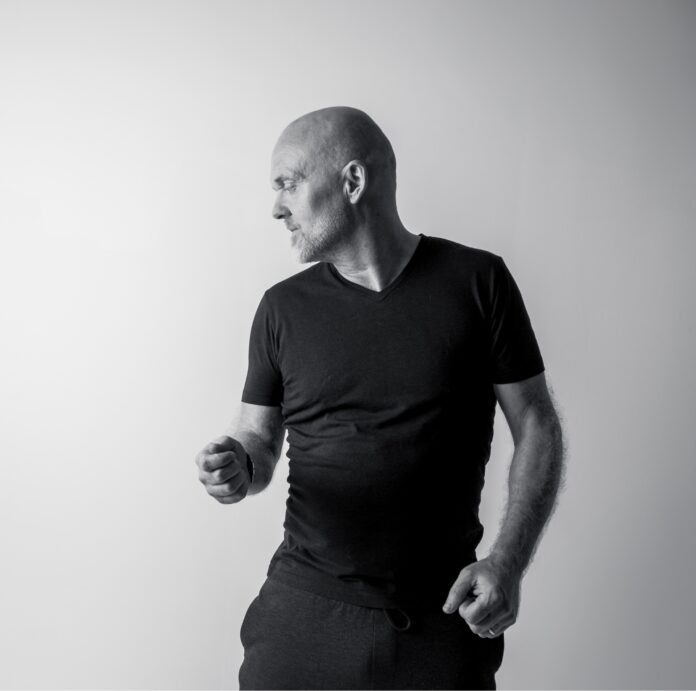Ghost in the Shell: Stand Alone Complex first aired in 2002, yet despite its age, it remains an anime classic still watched to this day. One of the reasons for this is its thought-provoking primary antagonist, the Laughing Man. His motivations remain mysterious for much of the series, yet the answers the Major ultimately uncovers don't disappoint. The Laughing Man's identity isn't one that has a clear answer. Instead, it raises philosophical questions about the nature of our increasingly digitalized society.
Throughout Stand Alone Complex, Major Mokoto Kusanagi and her veteran team at Section 9 pursue traces left by the Laughing Man as they try to determine the motivations behind the wave of cybercrimes in Japan seemingly connected to him. It's no easy feat because, as they slowly learn, the Laughing Man is no mere human but rather, a phenomenon known as a stand-alone complex.
What Is The True Identity of The Laughing Man?
Section 9 first believed the Laughing Man to be a master hacker whose initial crime occurred six years prior to the story. Supposedly, he kidnapped Earnest Serano, CEO of Serano Genomics. This corporation specialized in micromachine therapy as a means to treat cyberbrain sclerosis, a disease involving the hardening of tissue where cyberization had been performed as well as eventual brain death. Cyberbrain sclerosis was considered an incurable disease of the 21st century as AIDS, cancer and tuberculosis had been in centuries prior.
The Laughing Man was able to get away with this crime on account of his masterful hacking ability. He concealed his face from eyewitnesses and cameras with his iconic Laughing Man symbol -- a laughing, emoticon-esque face encircled by the text, "I thought what I'd do was, I'd pretend I was one of those deaf-mutes or should I?" He hacked the cybernetic eyes of entire crowds in real-time to achieve this, and when that failed, he was able to alter memories to erase all traces of his existence. The talent of this Laughing Man was so impressive that Section 9 later tried to recruit him once they ascertained his whereabouts.
The Serano Genomics kidnapping easily became the most infamous case of corporate terrorism in Japan since World War IV. The Laughing Man gained cult popularity and his symbol spread across the Internet as a meme. A spree of corporate blackmail and graffiti vandalism with the Laughing Man's symbol followed the kidnapping, and even six years later, the name still came up in connection to many crimes. But it wasn't until 39 people simultaneously attempted to assassinate Secretary-General Daido using the name of the Laughing Man that Section 9 involved itself in the case. It was thought that the Laughing Man had hacked the 39 individuals' ghosts to carry out the assassination, and this is what the police told the public had occurred.
Eventually, the Major tracked down the "real" Laughing Man and learned the truth behind his identity -- as much of the truth as was possible, that is. The individual behind the initial Serano Genomics case was a man named Aoi. He was a passionate university student at the time he kidnapped Serano, and in truth, this kidnapping was more like several day-long debates on the ethics of micromachine therapy between the two of them at diners, albeit with Aoi using hacking to conceal his identity from Serano. He sought answers, but more than that he sought to prevent "all the phonies in the world from being legitimized."
As it turns out, Aoi had contracted cyberbrain sclerosis. Dissatisfied with the ill-performance of micromachine therapy, he delved into the underside of the Internet for answers -- any answers -- and stumbled upon a dark secret. Several micromachine corporations like Serano Genomics had conspired with the Japanese government to suppress knowledge of the inexpensive Morai vaccine for cyberbrain sclerosis in order to continue raking in the cash from micromachine therapy. Most disgusting of all, although the government denied the vaccine approval for general distribution, it was secretly sanctioned as a fee-based clinical trial drug, for use by "specifically designated patients." The official position was that there were no patients being treated with the vaccine, but behind closed doors, it was being given to celebrities, government officials and other elite members of society. They'd known all along the vaccine worked.
Once Aoi understood all this, he couldn't let the injustice continue to fester. That's why he became the Laughing Man. As he told the Major, "When it comes to cyberization, I'm pretty much the shining example of a poster boy. So you'd think at the very least I would have felt terrified at contracting cyberbrain sclerosis. I'll tell you, it was a simple piece of mail I stumbled across in the net that began this whole thing. What I'd found was a blackmail document that had probably been sent to Serano Genomics. It was armed with a thesis that was a comparative study of the inadequacy of the Serano micromarchines versus the effectiveness of the Murai vaccine."
... For Aoi wasn't the only Laughing Man. He wasn't even the first.
The Laughing Man Stand Alone Complex
The greatest weapon of the Laughing Man was that he was never real. It's the reason why the veteran Section 9 spent much of Ghost in the Shell: Stand Alone Complex feeling like they were chasing ghosts -- he was more phenomenon than man. Aoi may have been responsible for the incident which brought the Laughing Man to national consciousness, but he was not the true originator of the phenomenon. On the Internet, someone else had abandoned the blackmail file Aoi found which inspired him to act. This individual could have been the "real" Laughing Man, the first person to have attempted to take on the corrupt elites over the Murai vaccine .... or this person could have obtained the blackmail file from someone else in an endless game of telephone with no true originator.
Even the symbol of the Laughing Man didn't uniquely belong to Aoi. He revealed its design was inspired by the logo of the Starchild Coffee company, which was itself inspired by the real-life Starbucks Coffee company. The quote from the Laughing Man's symbol -- "I thought what I'd do was, I'd pretend I was one of those deaf-mutes or should I?" -- comes from Chapter 25 of J.D. Salinger's The Catcher in the Rye, but with "or should I?" added to the end. Aoi had a fascination with Salinger's work, and similarly to the protagonist of The Catcher in the Rye, detested the "phonies" of the world. The Laughing Man moniker derives from Salinger's short story, "The Laughing Man," though this was never a name Aoi chose for himself, but instead one the media foisted upon him based on his use of a Salinger quote. There was no original symbol, just as there was no original Laughing Man who Aoi had been able to find.
Aoi wasn't the first Laughing Man and he wasn't the last either. The pop culture renown of the Laughing Man chagrined him because it turned his symbol of justice into one that was no longer unique or truthful. He told the Major that the Laughing Man became, "Absorbed into the conscious maliciousness of a third party that has no motive." But also into the will of someone who did have one.
The corrupt cabal in the Japanese government -- headed by Secretary-General Kaoru Yakushima -- turned the persona of the Laughing Man to their advantage. They conducted acts of corporate sabotage and manipulated stock prices using the Laughing Man's name, stealing money from other companies to strengthen their profit margins. They did so even though they'd already been making a considerable sum by concealing the existence of the Murai vaccine to perpetuate micromachine therapy. Their prominent use of the Laughing Man's symbol deflected suspicion from their illegal activity, fooling the public into believing the Laughing Man was behind it all.
Aoi despaired at this turn of events. The corruption he attempted to challenge had defeated him, and he felt helpless to do anything but withdraw from society. "All I could do was become a deaf-mute and avert my eyes from it all," he told the Major. Apart from the Serano kidnapping, the criminal acts attributed to the Laughing Man were either perpetrated by independent parties with their own motives or Yakushima's cabal -- not Aoi. The 39 would-be assassins which brought the Laughing Man case to Section 9's attention in the first place, in truth, showed no signs of having been hacked, despite the police's concocted claims to the contrary. It seemed they weren't forced into the assassination at all; they willingly sought to kill Daido out of a sincere belief in the Laughing Man's fight for justice.
Once the Major learned the full truth from Aoi, she became the Laughing Man herself in a plan to abduct Serano for the second time and drag Yakushima's cabal into the light of day. Serano was no mere target in the plan though, not this time -- he had been used as a pawn by the cabal himself and had always been sympathetic to Aoi's motives. He'd been put under unofficial house arrest since the first kidnapping in order to stop him from revealing the truth of the Murai vaccine to the public. "There isn't much evidence, so it's going to be a difficult job to accuse [Yakushima]," Serano told the Major. "But I'll become your copycat because I want to bring him down too." Yakushima's cabal, the 39 assassins, Aoi, the Major and now Serano -- all became the Laughing Man for their own motives.
In the final conversation between the Major and Aoi, he expressed wonder at this evidence that copies could still be produced despite the absence of an original. The original Laughing Man perhaps never existed and even Aoi had withdrawn from society in defeat, yet copies continued to perpetuate without an original from which they could model themselves after. He asked the Major what she would name this phenomenon.
She simply replied, "It would be a stand alone complex."
About The Author

